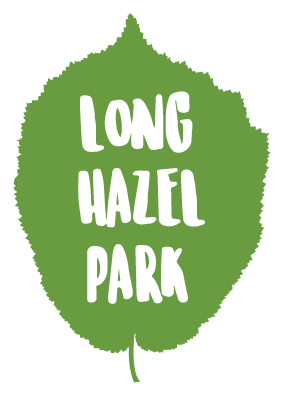LONG HAZEL PARK
Adult Only Touring Caravan Park & Camping
Self-catering Holiday Lodge Accommodation For hire
Sparkford Somerset
VISIT GLASTONBURY DURING YOUR STAY AT LONG HAZEL PARK, CARAVAN PARK & CAMPSITE
One of the most well-known towns in Somerset, Glastonbury is of course most famous for the annual Glastonbury Festival. However, there is much more to visit year-round! Situated on the Somerset levels, Glastonbury is believed to have been inhabited since the Neolithic times. With lots of spiritual and historical links, the town of Glastonbury is well worth a visit.
The alternative town centre boasts the Abbey, as well as many vegan friendly cafes and crystal shops. On the outskirts of the town is Glastonbury Tor, which is visible from many locations across Somerset and owned by the National Trust. With many links to King Arthur, Joseph of Arimathea and the Holy Grail, there's lots to explore during your camping or caravanning holiday with us!

One of the most popular walks in Somerset, Glastonbury Tor is situated just outside of Glastonbury town centre and offers views across Somerset. The building at the top is a former 14th century church tower, with the rest of the church thought to have been destroyed by an earthquake in 1275.
The Tor is owned by the National Trust but is free to climb. Visible from the Tor is our nearby settlement of King Arthur's Camelot, Cadbury Hillfort in North Cadbury, just two miles from our caravan park and equally offering stunning views of Dorset and Somerset.
Glastonbury Abbey is home to Grade 1 listed monastery remains, which was one of the richest and most powerful monasteries in England. Closed at the request of King Henry VIII, the last abbot was hung, drawn and quartered at Glastonbury Tor.
The Abbey in the town centre of Glastonbury is thought to be the final resting place of King Arthur and his Queen Guinevere. We suggest beginning your journey at Camelot castle, just two miles away from us in South Cadbury, and follow the legend on to the Abbey.


Out and About Live publications Caravan Magazine and Campervan Magazine chose to feature Glastonbury as their destination of the month, with us Long Hazel Park their chosen place to stay! As a Premier Parks Top 100 site, you'll find us featured regularly in Out and About Live publications and we're an ideal place to stay for the South West Motorhome Show held every year at Shepton Mallet.

Glastonbury town centre is great for small and alternative shops. You'll find lots of little alleyways and courtyards, often lined with crystal filled tunnels to enter.
If you're looking for crystals or homeware, there is a wide selection of independent retailers. There are also a good number of small clothing shops and jewellers. Glastonbury also has some great bookshops filled with information about Somerset and fictional lands. There is also a great range of small cafes and restaurants, usually serving vegetarian food, and ten local pubs serving up a variety of food and local ciders and ales.
Glastonbury Festival is one of the largest and most famous music festivals, running each year in June in nearby Pilton. The festival has been held for over 50 years and attracts 200,000 people each year.
As a nearby caravan park, we have many tourers spending a little time with us before taking their beloved motorhomes and campervans to the festival grounds and are perfect for those looking for a final hot shower before a week in the mud!


The Medieval Fayre is an annual weekend event in Glastonbury celebrating all things historical. Held at Glastonbury Abbey, you'll find activities, shows and stalls with reinactments, jousting and a Medieval market.
The Medieval Fayre is a very popular event, attracting around 8000 guests per year who are looking to join in with this historical day.
To help you plan your historical trip to Somerset, take a look at our history of King Arthur:
St Margaret's Chapel is situated in the town centre of Glastonbury, dating from 1250. The building was first established as a Pilgrim's hospital, replacing another on the High Street which housed those visiting the Abbey.
At St Margaret's Chapel there are five remaining almshouses which have been furnished as they would have been in World War 1. The chapel is open for daily prayer and meditation, with a multi-award winning garden situated in the same complex.


One of the world's oldest engineered roads is situated on the Somerset Levels, just outside of Glastonbury. It was built in 3807 BC and dating from Neolithic times. Spanning 1.2 miles, the track is one of a network that joined the seasonal camps occupied by the Mesolithic people.
It is possible to visit the Sweet Track at Shapwick Heath National Nature Reserve to walk along the track and view the wildlife, lakes, meadows and woodland.
One of the most popular attractions in Glastonbury is the Chalice Well, with the iconic well lid featuring across the town. The Chalice Well, sometimes known as the Red Spring or the Blood Spring, is situated near the base of Glastonbury Tor.
The red tinged water is said to have come from Jesus' blood, which was held in the Holy Grail, the cup used by Christ at the Last Supper. It is said that Joseph of Arimathea brought two vials of Christ's blood and buried these, along with the Holy Grail, at the base of the Tor. Due to the association with the Holy Grail, the waters are said to have healing properties.

The second of Glastonbury's natural healing springs is the White Spring. The White Spring is tinged white with calcite, also situated at the base of Glastonbury Tor. The White Spring features a Victorian pumphouse, now used as a temple space with bathing pools.
As with the Chalice Well, it is possible to collect some of the water to try and drink. Both springs are said to have different healing properties.
A large reclamation yard is situated just outside of Glastonbury town. Glastonbury Reclamation specialises in reclaimed building materials, furniture, ornamental garden pieces, as well as vintage cider presses and farming equipment.
This is a great place to visit for home and garden renovations and is often used by professionals to work on home and garden redesign projects. For antiques hunters, we've got a great page of recommendations, including Glastonbury Reclamation available on our website:


Situated just below Glastonbury Tor, the Somerset Rural Life Museum is situated on the old Abbey Farm. The museum covers rural life from the 1800s onwards, focusing on Somerset's heritage.
A 14th century Abbey Barn stands in the middle of the site, with a farmyard and orchard to explore. A series of galleries host exhibitions of photography and printmaking from local artists. Somerset Rural Life Museum also hosts craftmaking workshops.
From December to March, the Somerset Levels are an ideal place to see the starling murmurations. The reed beds are home to the flocks of birds, who fly up to 20 miles each morning to feed. The starlings form large groups to protect themselves from birds of prey.
In the evenings, they come back to settle in the reed beds again, with the Avalon Marshes one of the best places to see these Eastern European birds escaping the cold of the winter. Visit Shapwick Heath reserve or RSPB's Ham Wall reserve to see them.


The Glastonbury thorn, or holy thorn, is a twice-flowering hawthorne, both in winter and in spring found around Glastonbury. Legend has it that Joseph of Arimathea visited Glastonbury with the Holy Grail and thrust his staff in to Wearyall Hill, which then grew in to a thorn tree.
Trees grown from grafts of the original thorn are situated in St John's church, with a budded branch sent to the King or Queen each year since 1929.




